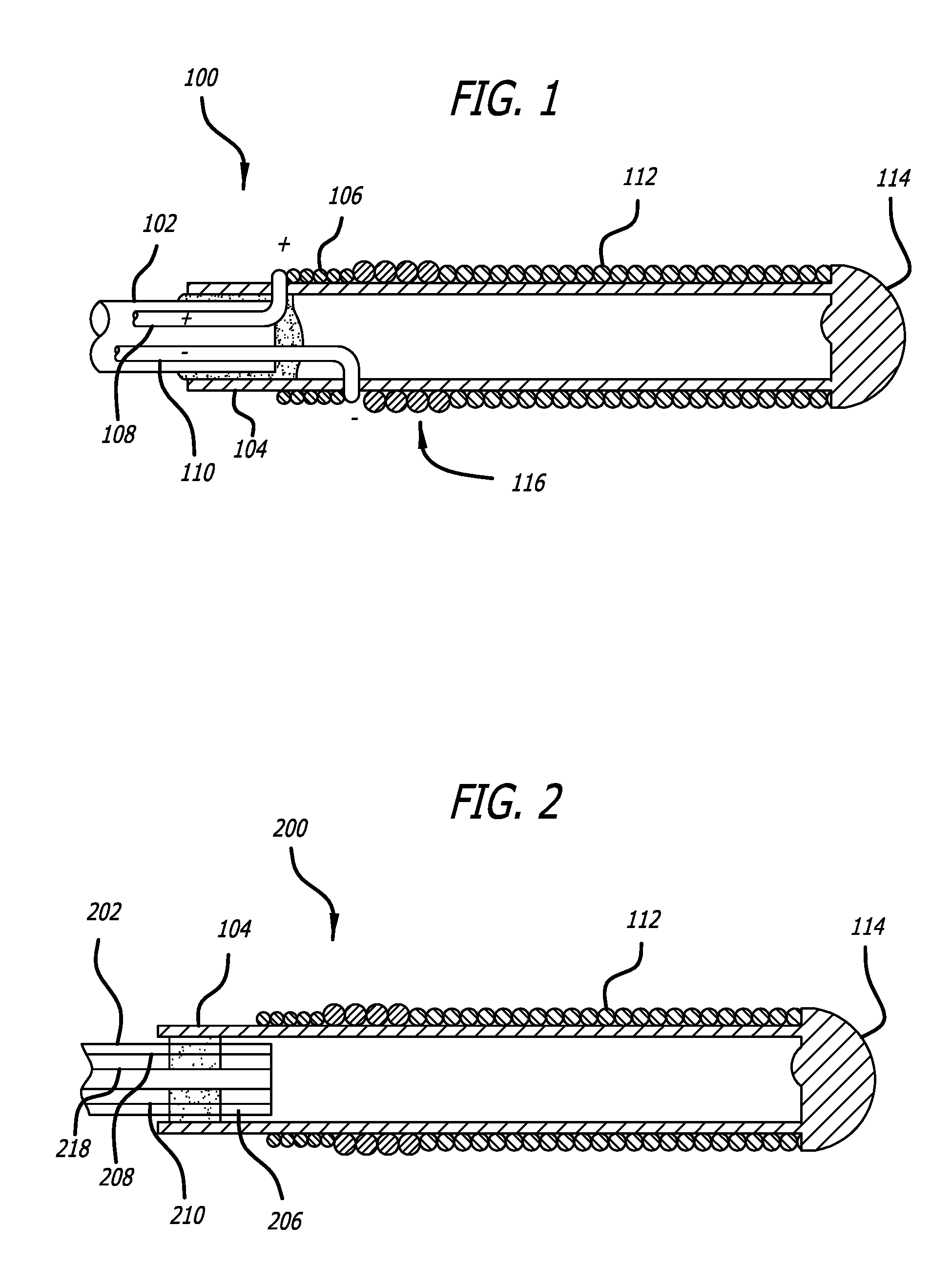System And Method For Locating Detachment Zone Of A Detachable Implant
a detachable implant and detachment technology, which is applied in the field of system and method for locating the detachment zone of the detachable implant, can solve the problems of adding another space-consuming machine to the area surrounding the patient, adding expense to the procedure, and complicating the procedure, so as to reduce the surface temperature of the device and shorten the detachment time
- Summary
- Abstract
- Description
- Claims
- Application Information
AI Technical Summary
Benefits of technology
Problems solved by technology
Method used
Image
Examples
example 1
[0120]The microcatheter used for Example 1 was a Rapid Transit microcatheter. The heater coil material used was Stablohm 710. The flow temperature was 99 degrees F. The heater coil resistance before testing was 42.1 Ohm. The heater coil resistance after the test was not recorded. Table 1 shows the results of Example 1.
TABLE 1PercentAdvanceAdvanceRetractPusher LengthResistance 1Resistance 2Resistance 1042.142.142.15042.2—42.27542.542.5—10042.642.642.6
example 2
[0121]The microcatheter used for Example 2 was an Excelsior 1018 microcatheter. The heater coil material used was Platinum. The flow temperature was 98.7 degrees F. The heater coil resistance before testing was 40.9 Ohm, and the heater coil resistance after the test was 40.9 Ohm. Table 2 shows the results of Example 2.
TABLE 2PercentAdvanceAdvanceAdvanceRetractRetractRetractPusher LengthResistance 1Resistance 2Resistance 3Resistance 1Resistance 2Resistance 3040.841.041.041.041.041.05040.941.241.141.141.141.17541.2—41.3——41.210041.741.641.641.741.641.6
example 3
[0122]The microcatheter used for Example 3 was an Excelsior SL10 microcatheter. The heater coil material used was Platinum. The flow temperature was 98.6 degrees F. The heater coil resistance before testing was 40.8 Ohm, and the heater coil resistance after the test was 40.7 Ohm. Table 3 shows the results of Example 3.
TABLE 3PercentAdvanceAdvanceAdvanceRetractRetractRetractPusher LengthResistance 1Resistance 2Resistance 3Resistance 1Resistance 2Resistance 3040.840.940.840.940.840.75041.041.041.041.040.941.07541.141.241.241.241.141.210041.641.641.741.641.641.7
PUM
 Login to View More
Login to View More Abstract
Description
Claims
Application Information
 Login to View More
Login to View More - R&D
- Intellectual Property
- Life Sciences
- Materials
- Tech Scout
- Unparalleled Data Quality
- Higher Quality Content
- 60% Fewer Hallucinations
Browse by: Latest US Patents, China's latest patents, Technical Efficacy Thesaurus, Application Domain, Technology Topic, Popular Technical Reports.
© 2025 PatSnap. All rights reserved.Legal|Privacy policy|Modern Slavery Act Transparency Statement|Sitemap|About US| Contact US: help@patsnap.com



